Fungi
Shaggy Ink Cap Mushrrom

This is an interesting growth I noticed in the newly-harvested field next to our home. A quick search revealed that it is a Shaggy Ink Cap Mushroom. Apparently, they are edible and quite delicious when fresh.
 This is a rather large mushroom and it caught my eye because it was standing tall in the field of stubble. This mushroom is also known by the name, “lawyer’s wig.” They don’t last long, as you can see in the photo on the right. This is a view of the same mushroom just two days later. As far as being edible, they are one of the “fool proof four” along with giant puffballs, chicken of the woods, and morels.
This is a rather large mushroom and it caught my eye because it was standing tall in the field of stubble. This mushroom is also known by the name, “lawyer’s wig.” They don’t last long, as you can see in the photo on the right. This is a view of the same mushroom just two days later. As far as being edible, they are one of the “fool proof four” along with giant puffballs, chicken of the woods, and morels.
You can get a slightly larger, more detailed view of either of these images by clicking on them.
All of the photos I post are available for purchase. If you’d like to buy one, click on the blue “Buy this Online” bar below for a variety of print and frame options or contact me (pops@popsdigital.com) for digital purchase and licensing options.
Two’s Company
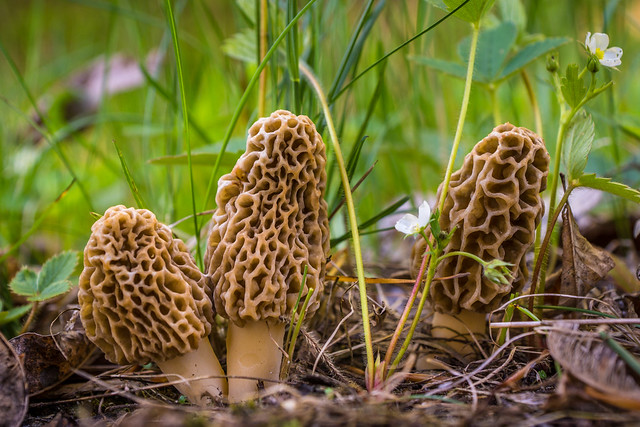
The prize of every springtime mushroom hunter – the elusive morel. These morels were found in the woods of northeast Wisconsin.
We haven’t had much success in our search for morels this year. This is the best of what we did find. They are pretty small. With the hot, dry weather we’ve experienced recently, the window of opportunity may have closed. We’ll see.
You can view a larger, more detailed version of this image by clicking on it. When you do, a full-screen version will open in a new browser tab.
All of the photos I post are available for purchase. If you’d like to buy one, click on the blue “Buy this Online” bar below for a variety of print and frame options or contact me for digital purchase and licensing options.
Fine Forest Dinnerware
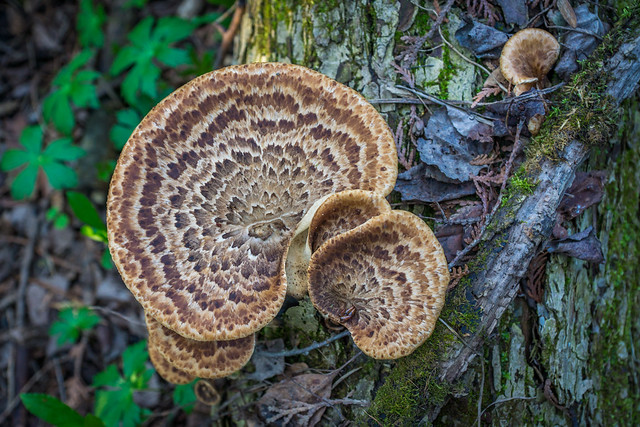
These pheasant back mushrooms were growing out of a fallen tree. They reminded me of a decorative dinnerware setting.
We found these (as well as other fungi) on a recent hike. They grow out of dead trees and stumps. The intricate patterns and coloration are the source of its name. They are supposedly eatable, but I’ve never tried them and wouldn’t know how to prepare them.
The tree these were growing out of was horizontal, lying flat on the ground, so this view is looking straight down. On an upright tree or stump these fungi tend to grow in a horizontal position, resembling a small, round shelf attached to the trunk.
You can view a larger, more detailed version of this image by clicking on the photo.
All of the photos I post are available for purchase. If you’d like to buy one, click on the blue “Buy this Online” bar below for a variety of print and frame options or contact me for digital purchase and licensing options.
Limited Shelf Life
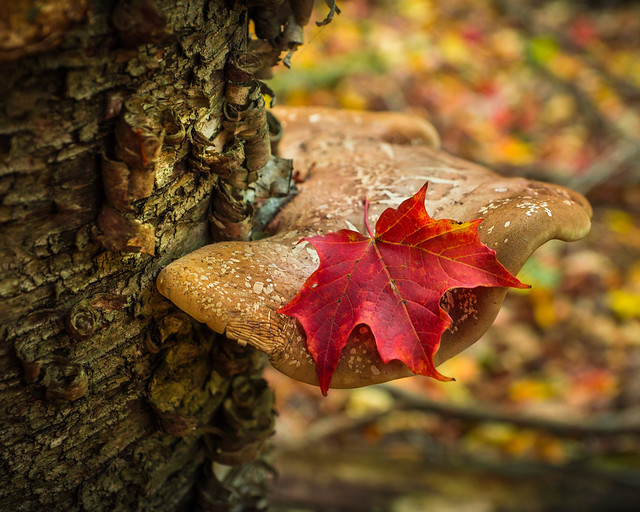
On one of my recent hikes through the autumn woods, I snapped a brightly colored maple leaf that found a resting place on a shelf mushroom.
For those not familiar, shelf mushrooms (or bracket fungi) grow on the side of trees (living and dead). When you find them, they’re usually attached to rough barked trees.
There are dozens of shelf mushroom varieties – different sizes, shapes and colors. They are known by a variety of descriptive names – beefsteak fungus, sulphur shelf, birch bracket, dryad’s saddle, artist’s conk, and turkey tail…and others.
The classification, Polypores, is often used for the type of the hard or leathery fungi (like the one pictured here) that lacks a stem, growing straight out of wood. The polypore’s woody fruiting bodies are called conks.
You can view a larger, more detailed version of this image by clicking on the photo.
All of the photos I post are available for purchase. If you’d like to buy one, click on the blue “Buy this Online” bar below for a variety of print and frame options or contact me for digital purchase and licensing options.
Tree Dwellers
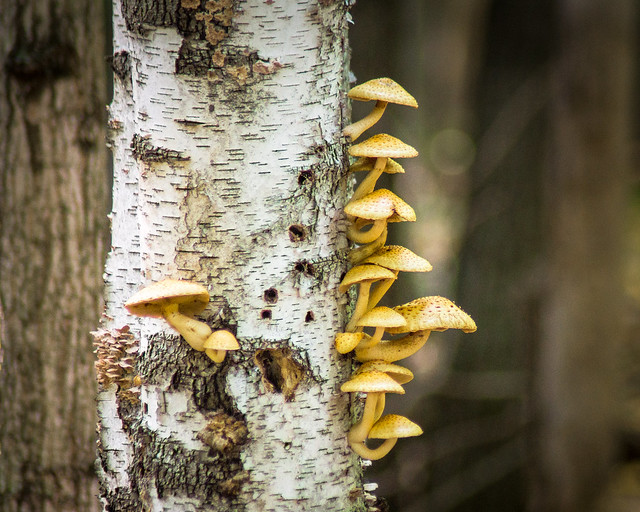
It was a banner year for mushrooms in northeast Wisconsin. An abundance of rainfall seemed to keep them sprouting up to, and even beyond, the first frosts.
I thought it was unusual to see so many mushrooms growing on a tree trunk. These healthy specimens were found in the woods of northeast Wisconsin.
To get a better view, click on the photo and a larger version will open in a new browser tab.
All of the photos I post are available for purchase. If you’d like to buy one, click on the blue “Buy this Online” bar below for a variety of print and frame options or contact me for digital purchase and licensing options.
Mushrooms On Wood

On a hike through the autumn woods, I thought it was odd to find these mushrooms growing out of a fallen tree. (Or are they toad stools?) In any case, they intrigued me.
You can view a larger, more detailed version of this image by clicking on the photo.
All of the photos I post are available for purchase. If you’d like to buy one, click on the blue “Buy this Online” bar below for a variety of print and frame options or contact me for digital purchase and licensing options.
Flock of Fungi
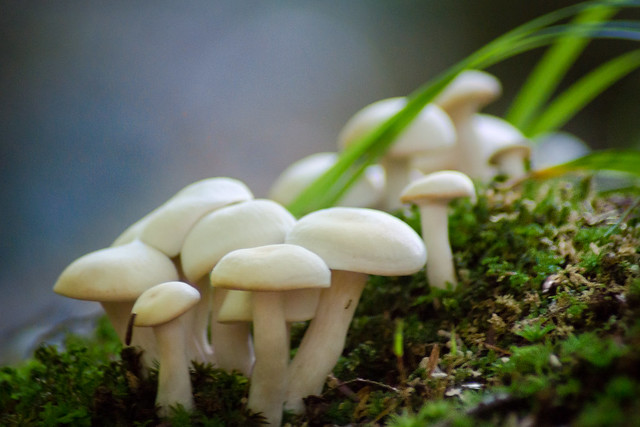
Our area received a lot of rain late summer to autumn. That provided favorable conditions for mushrooms. These are a just a few of the fungi bounty we discovered on a walk through Potawatomi Park near Sturgeon Bay, WI a few weeks ago.
You can view a larger, more detailed version of this image by clicking on the photo.
All of the photos I post are available for purchase. If you’d like to buy one, click on the blue “Buy this Online” bar below for a variety of print and frame options or contact me for digital purchase and licensing options.
Coral Fungi

This is unusual stuff. It’s a fresh bunch of coral fungi growing among the decaying mater on a N.E. Wisconsin forest floor.
Coral fungi is also commonly called club fungi. A more accurate name is clavarioid fungi. This type of fungi typically has erect, simple or branched basidiocarps (fruit bodies) that are formed on the ground, on decaying vegetation, or on dead wood.
To get a closer look, click on the image and a larger version will open in a new browser tab.
Fiery Fungi
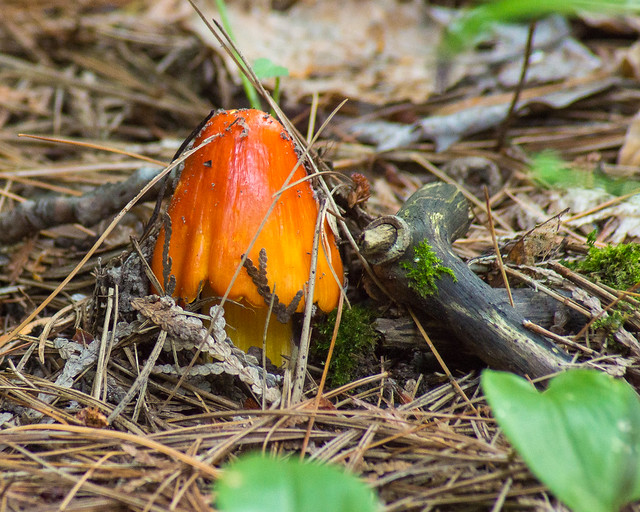
This was a great find on the forest floor at Potawatomi State Park, near Sturgeon Bay on Wisconsin’s Door County peninsula. I don’t know what kind of mushroom this is, but it sure stood out among the dead pine needles and other decaying matter.
To view a larger version of this image, click on the photo.


















































